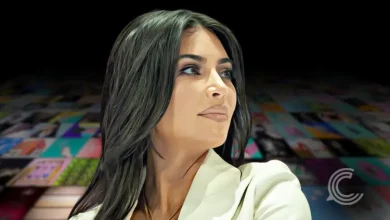How Jeff Bezos and Lauren Sánchez Are Buying a Seat at the Met Gala Table

Key Points:
- Jeff Bezos and Lauren Sánchez are the lead sponsors for the Metropolitan Museum of Art’s 2026 Met Gala exhibition, “Costume Art,”
- This high-profile patronage occurs amid persistent, unconfirmed rumours that Bezos is considering acquiring Condé Nast, the parent company of Vogue, which organises the Met Gala
- The involvement of ultra-wealthy individuals in such critical fundraising roles raises a significant debate about the future artistic independence and public-facing identity of major art institutions
The Metropolitan Museum of Art’s announcement naming Jeff Bezos and Lauren Sánchez as the lead sponsors for the 2026 Met Gala and its accompanying “Costume Art” exhibition did more than just confirm a massive financial commitment.
The Met Gala stands as the single most important fundraising event for the Met’s Costume Institute, generating tens of millions of dollars annually. For the museum, securing a lead sponsor like the Bezos couple, whose sheer wealth is staggering, provides a financial bedrock essential for mounting a major exhibition.
For the couple, the sponsorship offers something more valuable than money can buy, for example, instantaneous cultural influence at the apex of fashion, art, and media.
The Strategic Value of the Met Gala
Sponsorship of the Met Gala is not merely philanthropy; it is a highly strategic public relations move. The event commands an unprecedented media spotlight, often generating over a billion dollars in Media Impact Value, far surpassing global sporting events like the Super Bowl, reported by The Economic Times.
The couple, by placing their names front and center as the exhibition’s primary benefactors, achieves a level of visibility and cultural association previously reserved for legacy fashion houses or established art patrons.
The couple attended the 2024 Gala, marking their debut as a formidable social and fashion-forward pair. Sánchez has also graced the digital cover of Vogue, and they now regularly occupy the front rows of major fashion shows. These actions build a consistent public narrative that extends the Bezos brand far beyond its tech and e-commerce origins and into high society and the arts.
Beyond Philanthropy
The timing of the sponsorship adds significant fuel to an already simmering speculation pot: the ongoing rumors that Jeff Bezos is interested in acquiring Condé Nast. As reported by Artnet News, the media company, which publishes Vogue and co-organises the Gala, faces well-documented financial pressures.
Bezos’s ownership of The Washington Post establishes a clear precedent for his interest in high-profile media acquisitions. A Condé Nast purchase, particularly a publication as influential as Vogue, would give the couple an unprecedented position of cultural influence over fashion and media narratives. This high-profile museum sponsorship looks like a carefully orchestrated power play, embedding them directly into the institution that the magazine celebrates.
The prominent placement of the Bezos couple’s names, rather than solely that of the museum, highlights the modern dynamics of mega-patronage. It is a public branding exercise where vast capital translates directly into elite positioning.
The Cost of Ultra-Wealthy Patronage
The reliance of cultural institutions on ultra-wealthy patrons presents an uncomfortable trade-off. While the financial support is crucial, one curator noted, “for the bigger shows, without sponsorship they don’t happen,” it inevitably shifts control and focus.
Critics argue that this level of financial dependence can compromise the artistic integrity and curatorial independence of public institutions. When a museum relies on billionaires for its survival, how freely can it program exhibitions that might critique wealth, power, or the aesthetic choices of its benefactors?
The sheer scale of billionaire spending, both through private collecting and institutional funding, fundamentally reshapes the art world. An analysis from Mr. Family Office on billionaire collectors notes that the ultra-wealthy influence trends, drive up prices, and consolidate market power. This concentration of wealth affects everything from which artists achieve stratospheric value to which exhibitions receive funding.
The sponsorship decision has already drawn sharp criticism. One commentator, quoted by Artnet News, stated: “Another pillar of culture collapsing under one man’s aesthetic, politics, and P.R. strategy.” This sentiment captures the anxiety that a billionaire’s personal taste and public relations strategy may eclipse the curatorial mission of a world-class museum.



